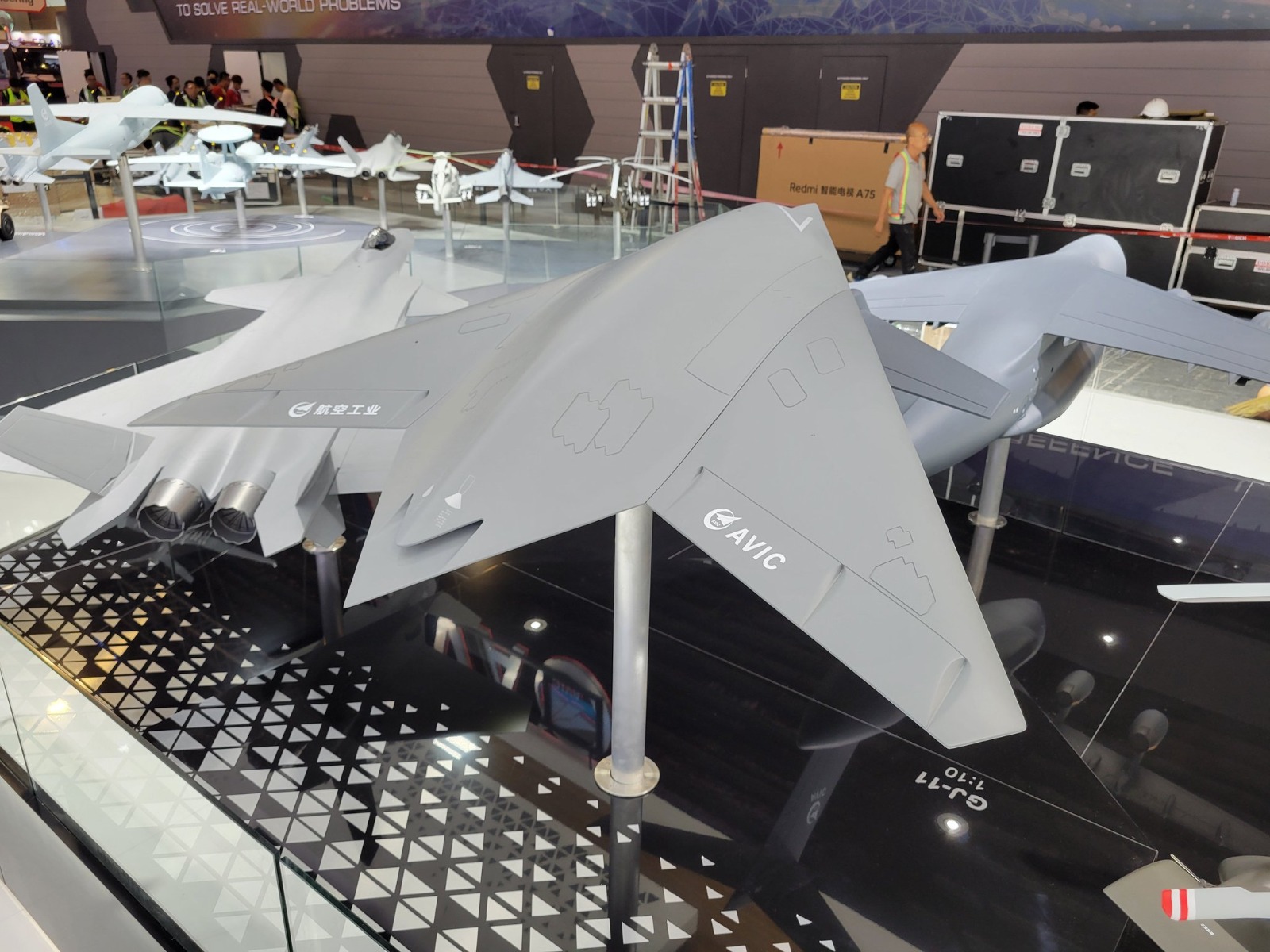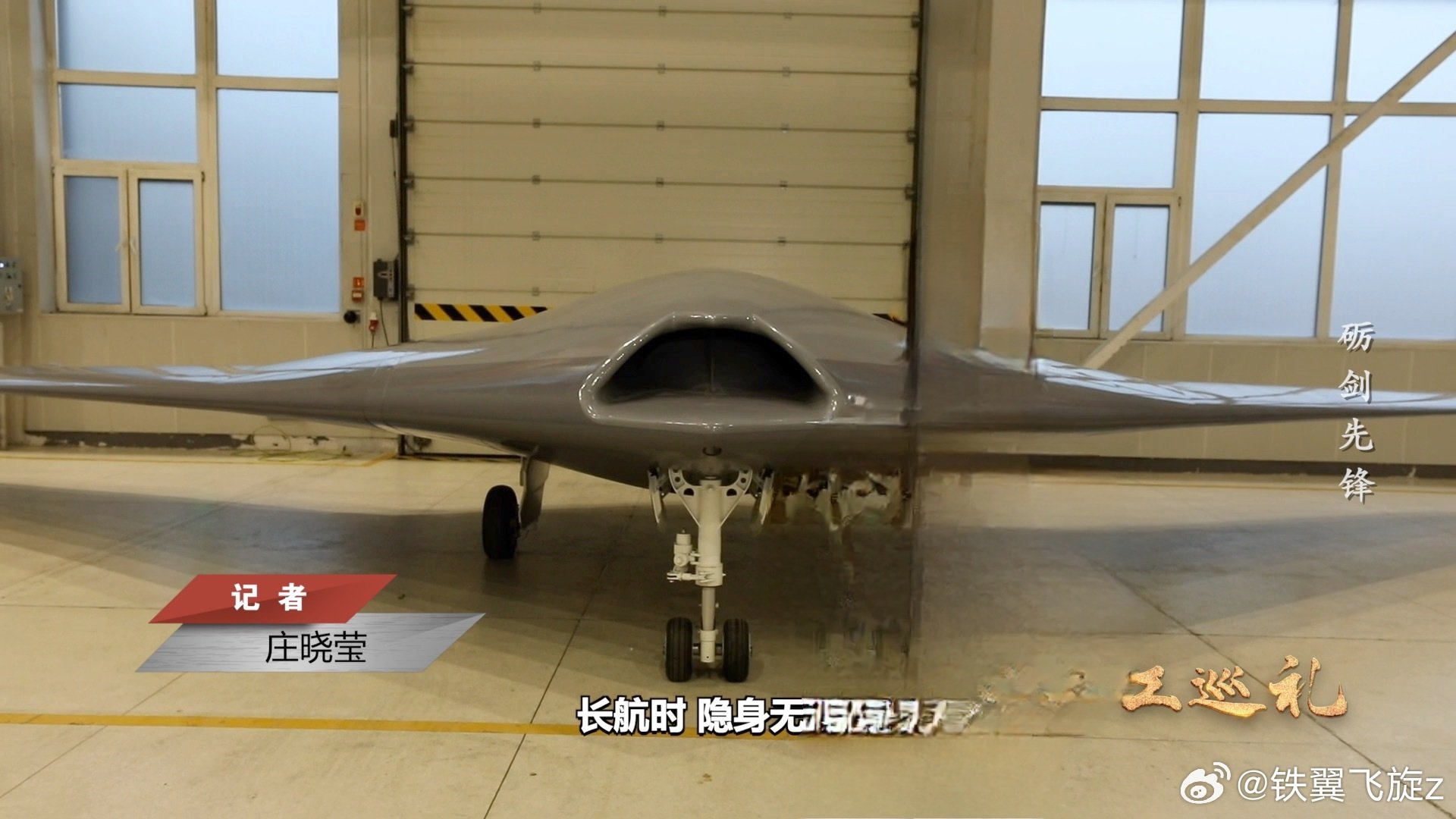China has been working on enhancing and perfecting its stealth drone armory for quite a few years. The latest to be showcased is the Sky Hawk, an unmanned aerial vehicle (UAV) set to enter the outdoor testing phase.
The Sky Hawk UAV has been developed by the No. 3 Research Institute under the China Aerospace Science and Industry Corporation (CASIC). A China Central Television (CCTV) report broadcast on February 25 said the Sky Hawk is a kind of long-endurance stealth UAV with penetration reconnaissance potential because of its flying wing configuration.
Citing the state television broadcast, Global Times noted that the ‘intelligent’ drone is capable of taking off, flying, and landing entirely on its own in fully autonomous mode. Global Times also published a video (seen below) of the UAV taking off and completing a trial flight. However, the footage is believed to be from several years ago.
The CCTV report states that an upgraded Sky Hawk, with better endurance and stealth capabilities, will shortly undergo outside testing. There are currently no details on the specifics of the stated outdoor testing.
As drone warfare gains prominence in the wake of modern combat conditions, countries are working to make their UAVs ‘stealthy,’ much like their combat aircraft. Observers noted that besides the Sky Hawk, China had also publicly displayed its flying wing drones, including the GJ-11 and CH-7 stealth attack drones.
China's Sky Hawk UAV is scheduled to conduct outdoors tests soon after some of its main parameters have been upgraded. Experts said the flying wing-configured drone is expected to play major roles in reconnaissance and attack missions. https://t.co/yLpiCslK38 pic.twitter.com/QctoA5t7ML
— Global Times (@globaltimesnews) February 27, 2024
Earlier this month, China displayed a scale model of its GJ-11 Sharp Sword unmanned combat aerial vehicle (UCAV) at the Singapore Air Show. The GJ-11 has been projected as the Chinese stealth jet J-20’s ‘loyal wingman’ and is also expected to fly from the latest Type 004 Fujian carrier.
While it is believed that GJ-11’s primary mission would be to conduct deep penetrating strikes on critical targets, the drone might have a limited Intelligence Surveillance and Reconnaissance (ISR) capability.

Another Chinese stealth drone that has become a point of interest is the CH-7. According to reports, after receiving new designs to further improve efficacy in information-based battles in modern warfare, China’s CH-7 UAV has finished testing, and its development is expected to conclude this year.
Chinese experts have maintained that the drone can detect hostile targets for a longer period, fly higher, stay in the mission zone longer, and concentrate more on day-and-night reconnaissance and surveillance in extremely risky conditions.

China is working on expanding its stealth drone inventory for both ISR as well as attack roles. These stealth drones have one thing in common: a flying wing design.
Speaking about the Sky Hawk UAV, a Chinese expert told Global Times that drones with flying wing designs are advantageous for electronic warfare, reconnaissance, attack, aerial refueling, and other critical operations in modern warfare. The enemy’s anti-aircraft firepower can be successfully contained, and the effectiveness of information-based combat can be significantly enhanced due to the stealthy design.
The absence of vertical wings and other traditional rudders makes the development of such aircraft difficult. Instead, the expert noted, flight control has to be achieved through the use of split brake rudders, differential thrust, and advanced flight control software, among other methods.
Boasting China’s technological prowess, the expert emphasized that this was why flying wing drones were regarded as sophisticated aircraft that could only be developed by nations with highly developed aerospace and aviation industries.
What Do We Know About the Sky Hawk UAV?
The Sky Hawk surveillance UAV took almost four years to develop. The lead engineer, Ma Hongzhong, and his team have continued to refine and improve the drone after its successful maiden flight in November 2017. The recent upgrades may also be a part of this consistent improvement process.
The CASIC No. 3 Research Institute’s Sky Hawk has been on display at several Chinese airshows since 2018. At Airshow China 2022, Ma told the Global Times that the stealth drone can operate by itself or in tandem with a UAV swarm and the WJ-700, another high-altitude, high-speed, and long-endurance armed reconnaissance drone.
In 2019, the state TV ran footage of the drone in flight and stated that the Sky Hawk “is a high-altitude, long-range and high-speed unmanned aerial vehicle capable of undertaking reconnaissance and patrol missions in hostile environments.” Additionally, it highlighted that the drone shared a flying wing aerodynamic design with the US Air Force’s B-2 stealth bomber.
At that time, military observers also pointed out that this Chinese drone would be 35 feet or 10 meters in length. Some, in fact, also drew parallels in design and shape between China’s Sky Hawk and Lockheed Martin’s X-44A drone.
The developer of the drone reportedly said in 2019 that the device had cutting-edge technology that enabled it to interact and work together with manned aircraft in combat and surveillance missions. The manned-unmanned teaming (MUM-T) enables pilots and ground crew to be safe while improving their situational awareness by receiving information from drones.

This essentially means that the Sky Hawk drone, much like the GJ-11, could be used as a loyal wingman to China’s J-20 or J-35 fighter jet. Several countries around the world are currently working on manned-unmanned teaming between UAVs and fighter jets to ensure survivability and enhance interoperability in information-based combat. It also appears to be consistent with China’s ‘intelligentized warfare’ concept.
“Battlefields of the future will be very intense and confrontational, and stealthy drones like the Sky Hawk will have a huge role to play,” Ma Hongzhong noted and mentioned that “Manned-unmanned teaming is the technology of the future … and the Sky Hawk has such a capability,” he said at the time.
In the latest assertion, however, Ma Hongzhong did not specifically mention the manned-unmanned teaming role for the Sky Hawk UAV.
Chinese officials are yet to provide more details on what responsibility the drone would be entrusted with, but the cutting-edge features have led military analysts to predict that it would be used for both surveillance as well as attack.
- Contact the author at sakshi.tiwari9555 (at) gmail.com
- Follow EurAsian Times on Google News




